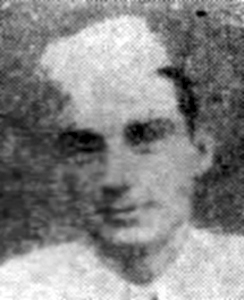Andrew N. Carter, age 33, from South Carolina, Chester county.
Service era: Korea
Date of death: Friday, July 10, 1953
Death details: On July 6, 1953, a large Chinese Communist Forces (CCF) unit attacked and overran the U.S. Army outposts on Pork Chop Hill in an attempt to seize whatever territory possible before the impending armistice agreement. After fighting for the position for four days, on July 10, the 7th Infantry Division Commander determined that the CCF disregard for casualties and desire to hold the outpost outweighed the position’s tactical value, and ordered a withdrawal that was eventually completed on July 11. The U.S. never again controlled Pork Chop Hill, preventing thorough recovery efforts for those who were killed or went missing during the fighting. Corporal Andrew Carter, who joined the U.S. Army from South Carolina, served with Company I, 3rd Battalion, 17th Infantry Regiment, 7th Infantry Division. He was reported missing on July 10, when Chinese troops overran his unit’s position as they fought for control of Porkchop Hill. No one saw him fall in battle, and he was not reported to be a prisoner of war. Conditions on the battlefield prevented an immediate search for him, and under the terms of the armistice, the area where he fell became part of the Demilitarized Zone. Today, Corporal Carter is memorialized on the Courts of the Missing at the National Memorial Cemetery of the Pacific.
Source: National Archives, Defense POW/MIA Accounting Agency

